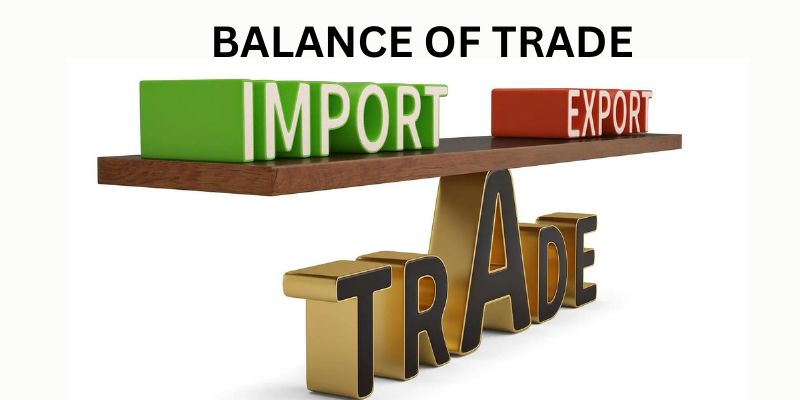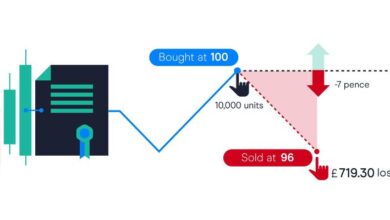
The balance of payments and the balance of trade are both measures of a country’s economic activity, but they refer to different aspects of it.
| KEY | Balance Of Trade (BOT) | Balance of Payments (BOP) |
|---|---|---|
| Records | Transactions that involve goods only. | Recordings of transactions involving both goods and services are kept. |
| Meaning | The Balance of Trade tracks the nation's import and export of products with the rest of the globe. | The Balance of Trade reflects a nation's level of exports and imports relative to the rest of the globe. |
| Component | Current Account of Balance of Payment incorporates it as one of its components. | Current Accounts and Capital Accounts are two distinct types of banking accounts. |
| Result | It could potentially be beneficial, detrimental, or equal in outcome. | All debits and credits have balanced out. |
| Capital Transfers | Do not factor into the Balance of Trade. | Balance of Payment is an inclusion. |
Overall Difference Between Balance of Payments and Balance of Trade
The balance of payments is a record of all economic transactions between a country and the rest of the world. It includes trade in goods and services, as well as financial transactions such as investments and transfers. The balance of payments can be in surplus (meaning more money is coming into the country than going out) or in deficit (more money is leaving the country than coming in).
The balance of trade, on the other hand, specifically measures the difference in value between a country’s imports and exports of goods. A trade surplus occurs when a country exports more goods than it imports, while a trade deficit occurs when a country imports more goods than it exports.
In summary, the balance of payments is a broader measure of a country’s economic activity that includes both trades in goods and services and financial transactions, while the balance of work is a specific measure of a country’s exports and imports of goods.
Balance of Payments

The balance of payments is a record of all economic transactions between a country and the rest of the world over a certain period, typically a year. It includes both the country’s exports and imports of goods and services, as well as financial transactions such as investments and transfers. The balance of payments is divided into two main accounts: the current account and the capital account. The current account includes transactions related to trade in goods and services, while the capital account includes transactions related to investments and other financial flows. The balance of payments must always be balanced, meaning that the total value of all transactions must be zero.
A deficit in the balance of payments means that a country is spending more on foreign goods and services than it is earning from exports, and may need to borrow from other countries or sell assets to make up the difference.
How to Calculate Balance of Payments
The balance of payments is calculated by adding up all of a country’s economic transactions with the rest of the world over a certain period, typically a year.
The current account balance is calculated by adding up the value of a country’s exports of goods and services, subtracting the value of its imports of goods and services, and adding or subtracting any net income from abroad (for example, from foreign investments) or current transfers (such as foreign aid).
The capital account balance is calculated by adding up the value of all capital inflows (such as foreign investment in the country) and subtracting the value of all capital outflows (such as a country’s investment abroad).
The overall balance of payments is the sum of the current account balance and the capital account balance, which must always be zero. If there is a deficit in the current account, it will be offset by a surplus in the capital account and vice versa.
An example of a formula to calculate the current account balance is:
Current Account Balance = Exports of Goods and Services – Imports of Goods and Services + Net Income from Abroad + Current Transfers
An example of a formula to calculate the capital account balance is:
Capital Account Balance = Capital Inflows – Capital Outflows
Finally, the overall balance of payments is :
Balance of Payments = Current Account Balance + Capital Account Balance
It is important to note that these formulas are just an example and the specific calculations may vary depending on the country and the source of the data.
Example
To calculate the balance of payments, you would add up all of a country’s international transactions in the current account, which includes:
- Exports of goods and services
- Imports of goods and services
- Income from investments abroad
- Payments for foreign workers
- Foreign aid
Then, you would add up all of the country’s international transactions in the capital account, which includes:
- Investment in foreign companies
- Purchases of foreign currency
- Loans to foreign countries
- Foreign investment in the country
The current account balance and the capital account balance are then combined to give the overall balance of payments. If the current account balance is positive, it means that the country is earning more from its international transactions than it is spending, and if it is negative, it means that the country is spending more than it is earning. A positive capital account balance means that the country receives more foreign investment than it is investing abroad, and a negative capital account balance means the opposite.
Example:
Let’s say a country’s exports of goods and services are $100 billion, its imports of goods and services are $80 billion, its income from investments abroad is $10 billion, and its payments for foreign workers are $5 billion. Its current account balance would be $100 billion + $10 billion – $80 billion – $5 billion = $25 billion.
Let’s say the country’s investment in foreign companies is $30 billion, its purchases of foreign currency are $20 billion, its loans to foreign countries are $10 billion, and its foreign investment is $40 billion. Its capital account balance would be $30 billion + $20 billion – $10 billion – $40 billion = -$10 billion.
Therefore, the country’s overall balance of payments would be $25 billion + (-$10 billion) = $15 billion.
Balance of Trade

The balance of trade is the difference between the value of a country’s exports and imports. A positive balance of trade, also known as a trade surplus, occurs when a country exports more goods and services than it imports. A negative balance of trade, also known as a trade deficit, occurs when a country imports more goods and services than it exports. The balance of trade is one aspect of a country’s balance of payments, which also includes the balance of capital and financial transactions.
How to Calculate Balance of Trade
The balance of trade (also known as the trade balance) is the difference between a country’s exports and imports of goods and services. To calculate the balance of trade, you would subtract the value of a country’s imports from the value of its exports. If the value of exports is greater than the value of imports, the country has a trade surplus. If the value of imports is greater than the value of exports, the country has a trade deficit.
Example
If a country’s exports are valued at $100 billion and its imports are valued at $80 billion, the BOT would be $20 billion (exports – imports = BOT). This would be a trade surplus, as the value of exports is greater than the value of imports. If the value of imports were more significant than the value of exports, the BOT would be negative and the country would have a trade deficit.





One Comment